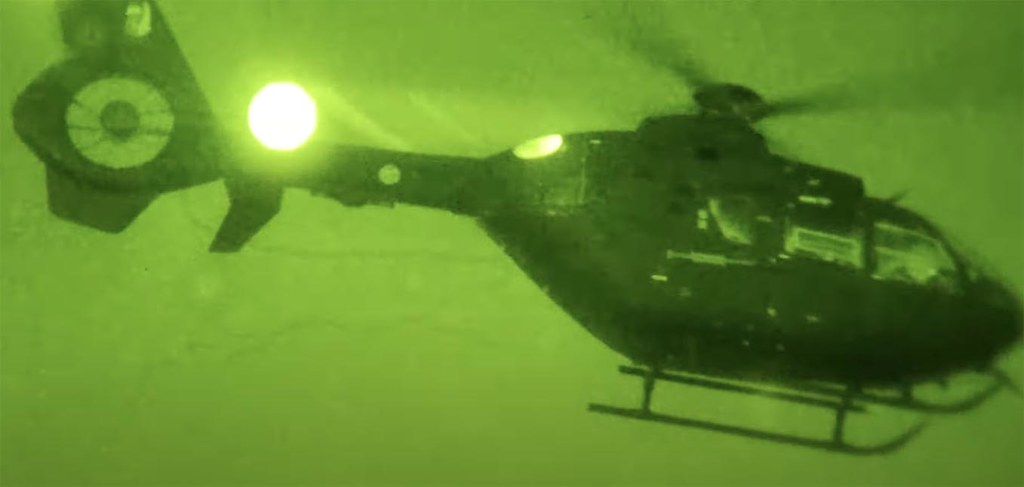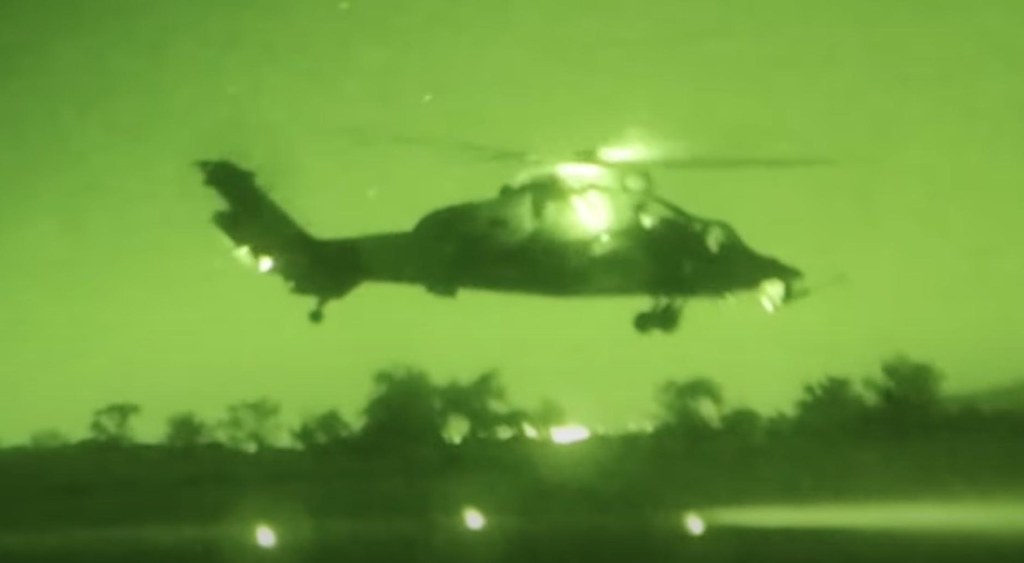The notable advantage of two of the Spanish military helicopters in night flights
For years, night vision devices have given helicopters the ability to fly in little or no natural light.
This capability is especially important for military helicopters, since nighttime helps mask many missions. Precisely, the Spanish Army has just published a video in which it shows us images of the nine helicopters that have participated in the Night Flight Seminar I/23 of the Spanish Army Airmobile Forces (FAMET). In the video we see transport helicopters CH-47 Chinoook, NH90 and AS-532 Cougar, a utility helicopter EC-135 and an attack helicopter EC-665 Tiger:
There is a detail in the video that draws a lot of attention. Judging by what we see, the images have been recorded with an infrared (IR) night vision device . This detail is noticeable in the engine exhausts. Here an example:

The Cougar has the exhausts located to the outside on the top of the fuselage, so they look like lights with an IR viewer. And they look pretty, as we can see in this other video capture:

The same is true of the Chinook, as we can see in this image taken on the ground. The exhausts of the two nacelles of their engines are perfectly visible.

Even in flight, the Chinook's engines give off a thermal signature well visible to IR scopes, as we see in this other image.

The same is true of the EC-135, a type of helicopter created by Eurocopter for the civilian market (mainly police and emergency services) and which some Armed Forces have ended up adopting. In this case, the exhausts are located at the beginning of the helicopter's tail and are also visible as two lights in the IR scopes.

With the most modern helicopters developed specifically for military purposes something different happens. Here we see a picture of the NH90:

As we can see, the NH90 has the exhausts of its engines behind the main rotor and oriented upwards, so that the air that moves the main rotor helps to dissipate the thermal signature of the exhausts, being very hidden in IR scopes.

The extreme case is that of the Tigre, in which no light can be seen in its exhausts, also located behind the main rotor and oriented upwards, as in the NH90. The only thing that can be seen in the following images are the helicopter's navigation lights, which can be turned off if necessary:

This ability to dissipate the thermal signature of engine exhausts is very important, as on a night mission it can mean the difference between being detected by the enemy or going undetected. In addition, dissipating the thermal signature also makes it easier for the helicopter to target IR-guided surface-to-air missiles. That is why it is an important detail when considering the purchase of a helicopter dedicated to combat missions.
---
Main photo: Ejército de Tierra.
|
Don't miss the news and content that interest you. Receive the free daily newsletter in your email: |
- Most read
- The 'hole' without civil flights around Paris during the opening of the Olympic Games
- Stunning footage of the F-15QA Ababil in flight recorded from its cockpit
- The firearms used by the Pontifical Swiss Guard, the smallest army in the world
- This is the driver station of an M1 Abrams tank and the impressive start of its engine
- Eurofighter vs F-35: the opinions of professional pilots on these advanced fighters
- The first photo of an F-16 fighter with Ukrainian insignia and the details it has revealed
- The most distant deployment of the Spanish Air Force in Australia and New Zealand

 ES
ES







Opina sobre esta entrada: